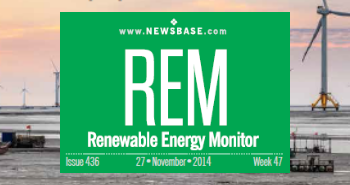Energo: Global electricity demand is surging faster than expected, warns IEA

The International Energy Agency (IEA) suggests that global electricity demand is surging faster than expected and that keeping climate change in check may thus become harder.
Electricity use has grown at twice the pace of overall energy demand over the last decade, with two-thirds of the global increase in electricity demand over the last 10 years coming from China, according to the IEA.
Electricity use will accelerate six times faster than overall energy consumption from 2023 to 2035.
Yet low-emissions sources are set to generate more than half of the world’s electricity before 2030, and demand for all three fossil fuels – coal, oil and natural gas – is still projected to peak by the end of the decade, said the agency in its new World Energy Outlook 2024 report.
A buyer’s market may emerge.
"The prospect of more ample – or even surplus – supplies of oil and natural gas in the latter half of this decade, depending on geopolitical developments, could shift us into a very different energy landscape from the one we have experienced during the global energy crisis," said IEA executive director Fatih Birol.
The Paris-based organisation highlighted that the global energy scene is transitioning into a new phase marked by both ample supplies and continued geopolitical risks. The report pointed to a potential oversupply of oil and liquefied natural gas (LNG) and a substantial increase in manufacturing capacity for clean technologies such as solar power and batteries in the latter half of the 2020s.
While clean energy is being integrated at an unprecedented speed, the pace of deployment is uneven across technologies and regions. The IEA noted that a more electrified energy system is coming into view as electricity demand continues to rise sharply.
“In previous World Energy Outlooks, the IEA made it clear that the future of the global energy system is electric – and now it is visible to everyone,” continued Dr Birol. “In energy history, we’ve witnessed the Age of Coal and the Age of Oil – and we’re now moving at speed into the Age of Electricity, which will define the global energy system going forward and increasingly be based on clean sources of electricity.”
“It implies downward pressure on prices, providing some relief for consumers that have been hit hard by price spikes. The breathing space from fuel price pressures can provide policymakers with room to focus on stepping up investments in clean energy transitions and removing inefficient fossil fuel subsidies,” Birol said.
“This means government policies and consumer choices will have huge consequences for the future of the energy sector and for tackling climate change,” he added.
The report also emphasises the need for governments and consumers to make crucial decisions as the energy landscape evolves, with consequences for climate goals. It finds that geopolitical tensions are exposing vulnerabilities in the current energy system, highlighting the need for stronger policies and investments in cleaner technologies. Ongoing regional conflicts and shifting market trends pose risks to both energy security and global emissions reduction efforts.
China’s role in this evolving scenario is pivotal, the IEA said, influencing investment trends, fossil fuel demand, and the growth of renewables. "China's rapid expansion in solar energy is on track such that, by the early 2030s, its solar power generation alone could exceed the current total electricity demand of the United States," Birol noted.
Looking ahead, global electricity consumption is expected to grow even faster, with annual increases equivalent to Japan's current electricity use, driven by existing policies. Achieving net-zero emission targets could accelerate this growth further. However, significant investments are required to modernise energy infrastructure, particularly in electricity grids and storage.
The report underscores that current levels of investment are not sufficient to keep pace with the rapid adoption of clean energy. For each dollar invested in renewable generation, only 60 cents go towards grids and storage, highlighting a need for more balanced spending. The IEA calls for the ratio to shift to 1:1, as resilient power systems will be crucial to withstand the increasing frequency of extreme weather events.
Although the momentum for clean energy transitions is strong, the world remains far from meeting its net-zero emissions targets, notes the agency. Based on current policies, carbon emissions are expected to peak soon but will not decline sharply afterwards, setting the planet on a path to a 2.4°C temperature rise by century's end – well above the Paris Agreement’s 1.5°C target.
Worldwide CO2 emissions from electricity increased by 20% from 2010 to 2023, said the IEA. Clean power is just not keeping up with surging demand. The agency foresees an expansion of non-carbon electricity – such as renewables and nuclear – exceeding power consumption accelerations increases by 20% by 2030.
The report connects energy security risks with climate threats, pointing to more frequent severe weather events caused by decades of high emissions. The IEA urges the construction of a new energy system that prioritises security and resilience while ensuring that the benefits of clean energy are widely shared.
Challenges remain, particularly in developing regions, where high financing costs and project risks hinder the spread of cost-effective clean technologies. Energy access disparities persist, with 750mn people – mainly in sub-Saharan Africa – lacking electricity and over 2bn without clean cooking fuels.
The IEA's findings highlight the critical need for global collaboration to accelerate the shift toward sustainable and secure energy systems.





Follow us online